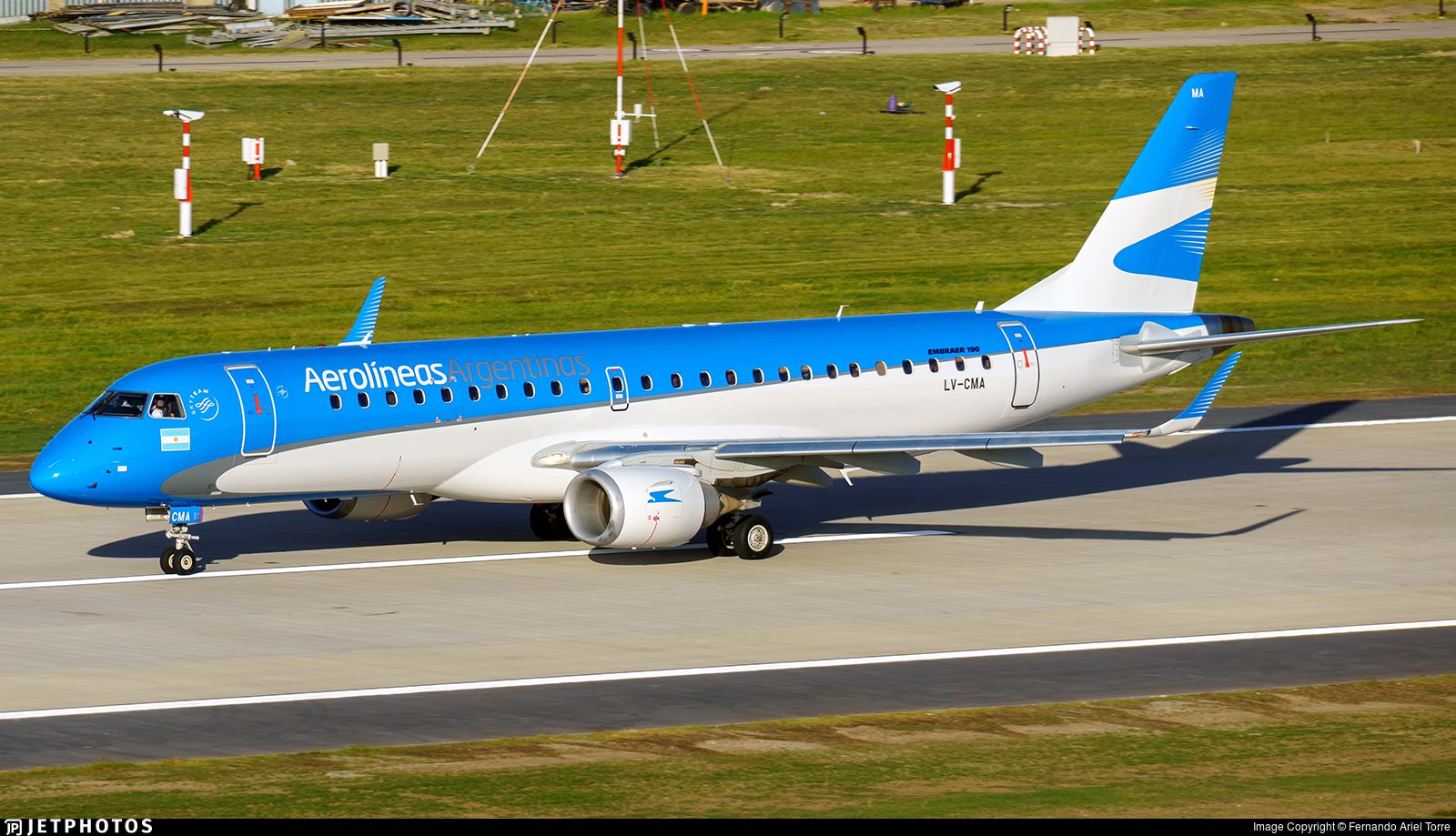
aerolineas e190
A fundamental paradox defines Argentine aviation in 2025: a market experiencing historic, double-digit passenger growth is simultaneously being crippled by systemic labor conflicts. This is not a simple wage dispute; it is an ideological war between two opposing visions for the nation’s airspace.
On one side is the government’s free-market doctrine, a strategy to dismantle the state-centric model through deregulation and the privatization of the flag carrier, Aerolíneas Argentinas. On the other hand, there is the trenchant resistance of unions, who frame their fight as a defense of national sovereignty and operational safety. The nationwide air traffic controller strike of August 2025 was the inevitable climax of this collision, a definitive case study of a sector where explosive growth and systemic instability now coexist.
The strike led by the air traffic controllers’ union, ATEPSA, was a meticulously planned paralysis of the national air transport system. It began after 17 rounds of wage talks with the state-run air navigation company, EANA, collapsed, and two legally mandated “mandatory conciliation” periods failed to produce an agreement.
The union’s modus operandi was strategically sophisticated. During peak hours across all 54 national airports, controllers suspended all services for departures, grounding outbound traffic. However, they crucially allowed inbound flights to land. This tactic avoided acute safety risks, but created a logistical nightmare on the ground. Exempting medical and humanitarian flights permitted the union to maintain a posture of responsibility.
The impact was severe and immediate. On a single day, Aerolíneas Argentinas experienced 178 flight cancellations, affecting 15,000 passengers. The initial financial cost for the state carrier quickly mounted, estimated at US$2 million, as the nation’s key airport hubs descended into chaos. On August 27, ATEPSA and EANA finally reached an agreement, a short-term truce that is fragile as inflation is fading, but not disappearing.
The ATC strike was not an anomaly but the culmination of a broader conflict. The pilots’ union, APLA, executed its own strike against Aerolíneas Argentinas in June 2025, costing the airline over $1.1 million. It threatened another strike in August to protest a decree that increased flight hours and reduced mandatory rest periods, arguing that this would “seriously jeopardize operational safety.
A defining feature of this period is the government’s repeated use of “mandatory conciliation”. This legal tool has functioned not as a mechanism for resolution, but for conflict deferral, creating a predictable cycle of postponed strikes followed by renewed, and often intensified, industrial action. This instability is compounded by the aviation unions’ strategic participation in national general strikes, which shut down the sector entirely. As seen on April 10, 2025, over 250 flights were canceled from Buenos Aires’ main airport alone.
The Milei Doctrine: “Open Skies” and Privatization
The turmoil in the sector is a direct response to the administration’s three-pronged strategy to remake Argentine aviation. The first pillar is a radical market liberalization through an “Open Skies” policy, enacted via decree, which deregulated domestic airfares, streamlined market access for new carriers, and, most radically, authorized foreign airlines to operate domestic routes (cabotage).
Anticipating the fierce opposition from labor unions that such a move would provoke, the government simultaneously deployed its second pillar: curtailing labor power. A sweeping “Decree of Necessity and Urgency” (DNU) designated aviation an “essential service,” a legal maneuver designed to severely limit the impact of strikes by mandating minimum service levels. The third and most politically charged pillar of this doctrine is the privatization of Aerolíneas Argentinas.
The government formally initiated the sale process, citing the US$8 billion in state subsidies the carrier required since its 2008 renationalization. However, the effort has been hindered by congressional opposition and the challenge of finding a buyer willing to assume the substantial political risk.
The airline achieved a significant milestone by announcing it will not require state funding in 2025. However, a failed privatization could leave it as a weakened state entity, while a successful but acrimonious sale would almost certainly trigger an unprecedented wave of labor backlash. The conflict remains: with no buyer and no political margin for the state to invest, the carrier is trapped in a limbo. Getting out of it won’t be easy, but remaining in it won’t do Aerolíneas Argentinas any good.
Faced with an existential threat, the unions mounted a coordinated, multi-front resistance. The five central aviation unions formed a unified front for joint protests and political lobbying. They are waging a sophisticated narrative war, framing their opposition as a defense of national sovereignty, safety standards, and regional connectivity.
Crucially, they have internationalized the conflict. The unions filed a formal complaint against the government with the International Labour Organization (ILO), a UN agency, accusing it of violating international conventions by using the “essential service” designation to eliminate the right to strike effectively. This move seeks to delegitimize the government’s reforms on a global stage.
The Market Paradox: Explosive Growth Amidst Chaos
While the operational environment is chaotic, commercial metrics show a market in vigorous expansion. In the first five months of 2025, passenger traffic grew by 14%. May 2025 set a historic record with a 21.4% year-over-year increase.
This growth has been captured primarily by ultra-low-cost carriers (ULCCs). JetSMART Argentina’s domestic market share surged from 13.5% to 25% in just one year, making it the country’s second-largest carrier. Meanwhile, Aerolíneas Argentinas has seen its dominant market share erode, particularly on key international routes where foreign carriers are expanding aggressively. On the critical Argentina-Brazil corridor, its market share fell from 28.5% in mid-2024 to 20.5% in mid-2025. Over the same period, Brazilian carrier GOL saw its share jump from 24% to 32%. This is clear evidence of a structural market realignment.
Overall seat capacity in Argentina is growing at 16.9% YoY, the fastest rate in Latin America, confirming the powerful effect of deregulation on supply and demand. The quarrel is about what growth means to the actors: for the government, numbers rising are numbers rising, independently of the carrier or flag those aircraft wave. For unions, growth implies diminishing Argentine operation and, therefore, their own leverage on the commercial aviation landscape.
They have one card up their sleeve, though: the reform agenda is fragile, relying heavily on executive decrees. A future change in government could lead to a swift and dramatic reversal of policy, creating massive long-term uncertainty for investors. The power move they have left is a political change, led by ballots, in the upcoming congressional elections. We are two long years away from the presidential run. In Argentina, sometimes two years feel like 15 minutes. Sometimes, like three decades.
In the medium term, the Argentine market is expected to continue its paradoxical path of high growth and high volatility. The outcome of the struggle over Aerolíneas Argentinas will determine whether the country transitions permanently to a liberalized market or reverts to protectionism. Until this fundamental question is resolved, turbulence will continue to be the defining characteristic of the Argentine skies.
Views: 139



